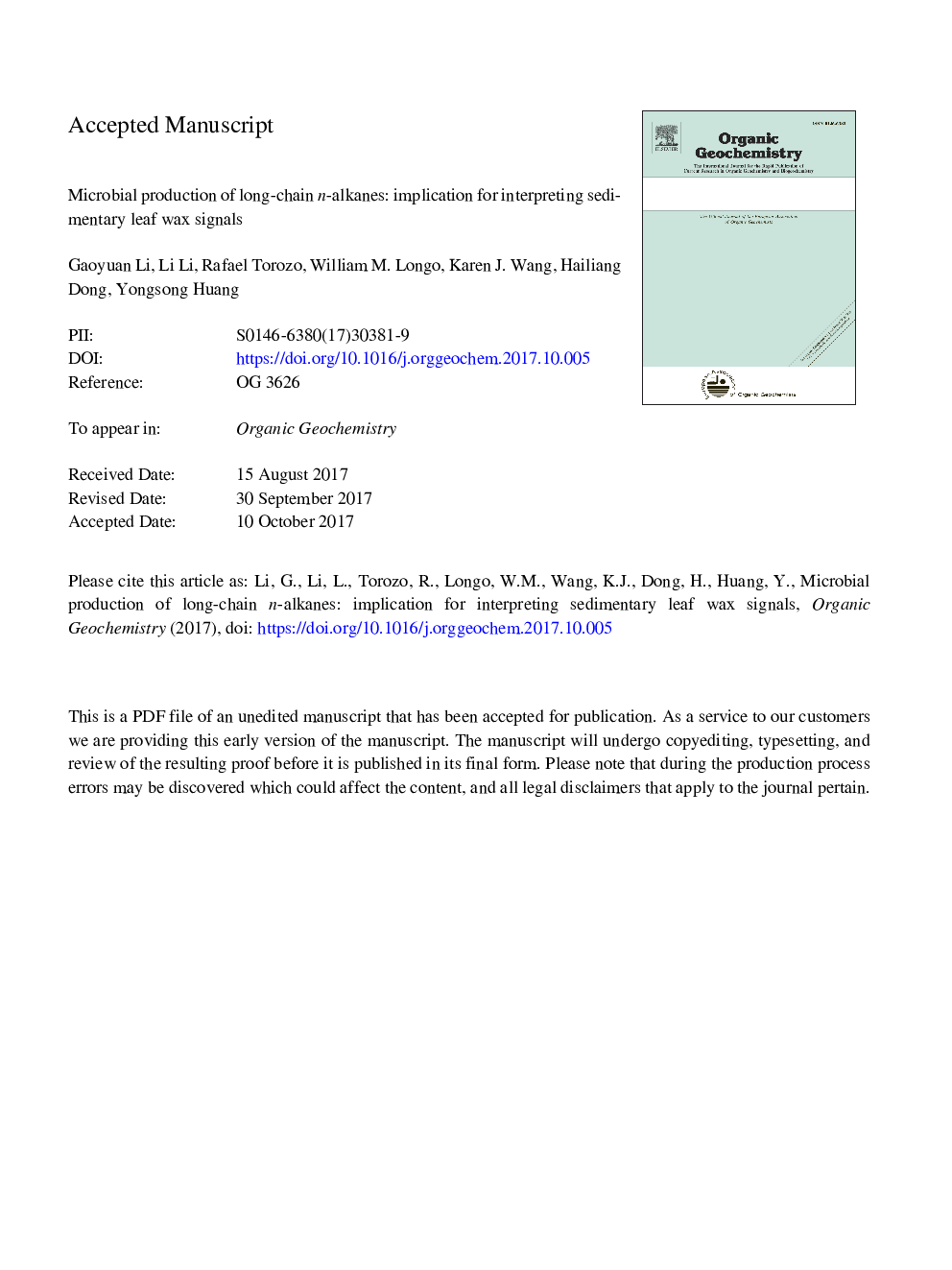| Article ID | Journal | Published Year | Pages | File Type |
|---|---|---|---|---|
| 7817076 | Organic Geochemistry | 2018 | 26 Pages |
Abstract
Relative distributions as well as compound-specific carbon and hydrogen isotope ratios of long-chain C25 to C33n-alkanes in sediments provide important paleoclimate and paleoenvironmental information. These compounds in aquatic sediments are generally attributed to leaf waxes produced by higher plants. However, whether microbes, such as fungi and bacteria, can make a significant contribution to sedimentary long-chain n-alkanes is uncertain, with only scattered reports in the early 1960s to 1970s that microbes can produce long-chain n-alkanes. Given the rapidly expanding importance of leaf waxes in paleoclimate and paleoenvironmental studies, the impact of microbial contribution to long-chain n-alkanes in sediments must be fully addressed. In this study, we performed laboratory incubation of peatland soils under both anaerobic and aerobic conditions in the absence of light with deuterium-enriched water over 1.5â¯years and analyzed compound-specific hydrogen isotopic ratios of n-alkanes. Under aerobic conditions, we find n-alkanes of different chain length display variable degrees of hydrogen isotopic enrichments, with short-chain (C18-C21) n-alkanes showing the greatest enrichment, followed by long-chain “leaf wax” (C27-C31) n-alkanes, and minimal or no enrichment for mid-chain (C22-C25) n-alkanes. In contrast, only the shorter chain (C18 and C19) n-alkanes display appreciable isotopic enrichment under anaerobic conditions. The degrees of isotopic enrichment for individual n-alkanes allow for a quantitative assessment of microbial contributions to n-alkanes. Overall our results show the microbial contribution to long-chain n-alkanes can reach up to 0.1% per year in aerobic conditions. For shorter chain n-alkanes, up to 2.5% per year could be produced by microbes in aerobic and anaerobic conditions respectively. Our results indicate that prolonged exposure to aerobic conditions can lead to substantial accumulation of microbially derived long-chain n-alkanes in sediments while original n-alkanes of leaf wax origin are degraded; hence caution must be exercised when interpreting sedimentary records of long-chain n-alkanes, including chain length distributions and isotopic ratios.
Related Topics
Physical Sciences and Engineering
Chemistry
Organic Chemistry
Authors
Gaoyuan Li, Li Li, Rafael Tarozo, William M. Longo, Karen J. Wang, Hailiang Dong, Yongsong Huang,
